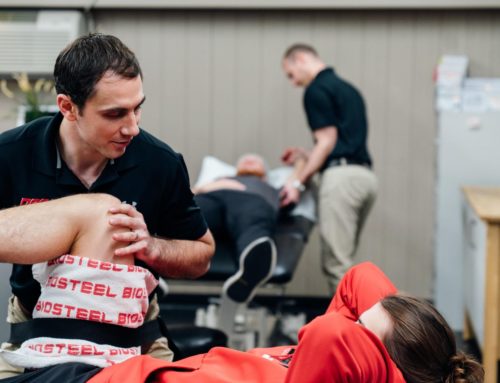Cupping…What Is It?
Do you remember watching Michael Phelps win all those gold metals in the 2016 Olympic Summer Games in Rio de Janeiro? That’s where most people were first exposed to cupping, wondering what those circular marks were on his back.
Taking it’s origins from China, where they used it to removal of boils, cupping gives the therapist the ability to affect deeper tissues and increase range of motion with little stress on their hands.
Cupping is a technique whereby a vacuum of negative pressure is created inside a cup, drawing the skin in, separating the layers of superficial fascia. The negative pressure below the surface also draws the old blood and cellular debris to the surface, replacing it with fresh blood. This is what usually results in the circular marks on the body; the “bruises” that aren’t bruises.
Cupping is used to treat multiple conditions affecting multiple systems, including:
- Musculoskeletal system: Fascial restrictions, muscle tension, scars, adhesions and joints.
- Circulatory systems: Chronic inflammation
- Respiratory systems
- Digestive systems
- Nervous systems: Pain reduction
The cups can vary in size and materials, all used for different reasons. In a massage setting, the cups most commonly used are silicone or plastic, but there are also glass cups that may be used for fire cupping by different practitioners.
There are two methods of cupping that I use; stationary and cupping massage or dynamic. The stationary cupping leaves behind the marks you have seen on various athletes and celebrities, whereas the dynamic cupping may leave streaks or nothing at all.
What Happens During Your Session?
An assessment will be done to ascertain which structures are involved; which tissues are causing the restrictions or where the pain is coming from and so on. There are different techniques to be used:
- Stationary cupping: where the cup is placed and left in a single position. This method will usually leave cupping marks and depending on the strength of suction used can lead to tiredness post treatment. This technique is great for treating trigger points and accessing deeper tissues with less discomfort.
- Cupping massage: where the cup is applied to the skin with a lubricant and then glided over the tissues. This technique will bring a lot of blood flow to the area treated making the tissues red and warm to the touch. Cupping massage is a great technique for increasing circulation, decreasing muscle tension, softening scar tissues and adhesions.
There are other less common techniques that can be used such as Anchor and Stretch and Flash cupping.
What To Do After Your Cupping Treatment
Like a usual massage, post treatment you may be tired and over the next few days feel similar soreness to a deep tissue massage. Hydration post cupping is important to help your lymphatic system flush out the residual stagnation that has been brought to the surface. These cupping marks can appear anywhere between immediately and 48 hours post treatment and can last up to 2 weeks.
Cupping massage will benefit anyone looking for pain relief, relaxation, increase circulation, muscle relaxation and a gentler approach to myofascial treatments. If cupping is what you’re looking or you’re just looking for more information please feel free to contact me or book a massage appointment.
Written by: Stephanie O’Neill-Beetham, Registered Massage Therapist & Certified Athletic Therapist






